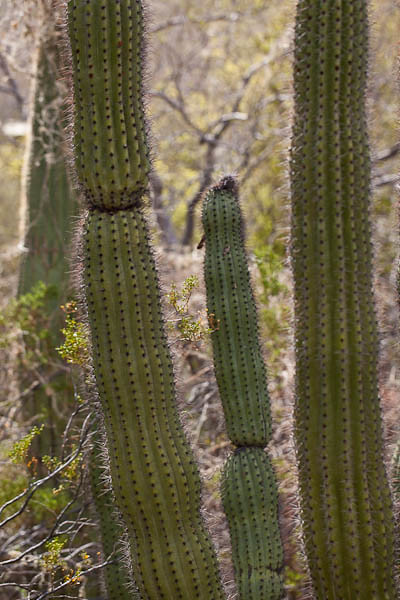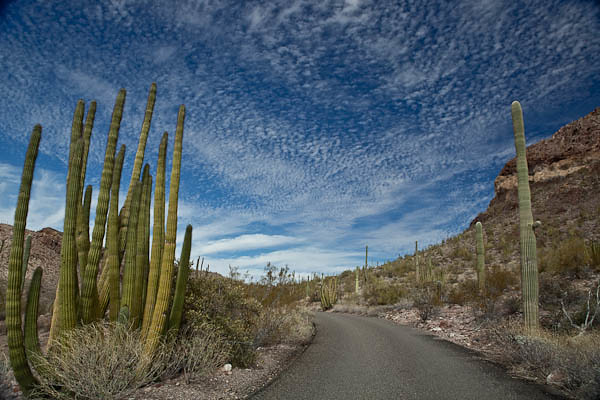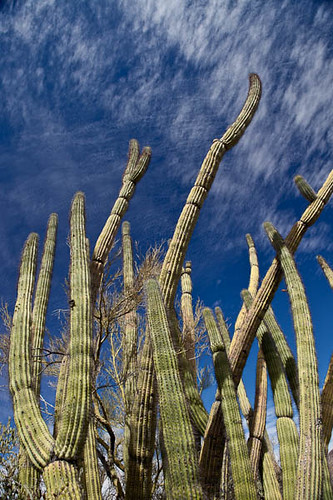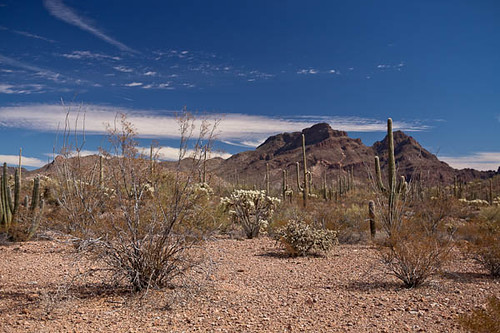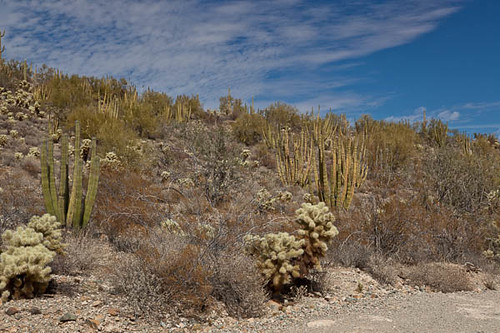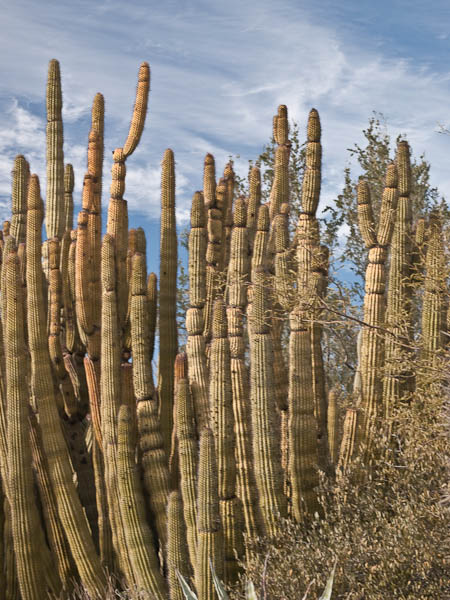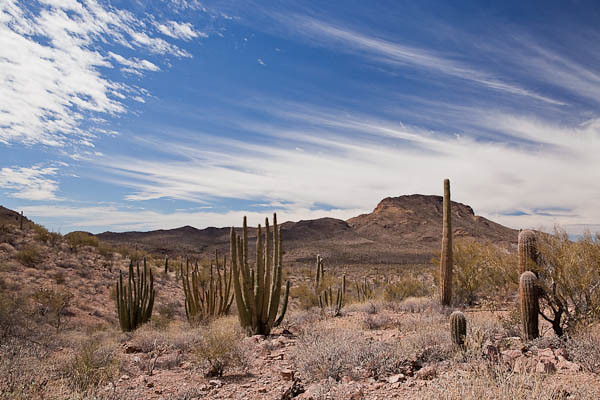
Order Cheap Tramadol Online Cod Organ Pipes at Organ Pipe Cactus NM
Tramadol Online Uk Reviews Journal Entry:
8:50 am. 74˚ F, windy, gusting to 30 mph. Sunny, no clouds, but dusty in the distance–the faraway mountains that I usually see in detail are obscured in a dust cloud.
Buy Cheap Tramadol With Mastercard I am quite fond of the organ pipe cactus. It doesn’t really live in this part of the Sonoran Desert, it has been planted by the Desert Museum staff. Before I go back to Wisconsin, I want to make one more trip Organ Pipe Land, to Organ Pipe Cactus National Monument, nearly three hours west of Tucson.
Organ Pipe — this one has 14 arms. Are they called arms? Most of them come straight from the ground. Two arms on this plant have split–like twins–and have a V-shape at the top.
18 feet–tallest. 8 inches–shortest.
I wonder what makes the girth of the cactus pull in–like a cord was tightened around its circumference and then removed, leaving an indentation. It’s a handsome specimen with lots of strictures. I like its shape. It is more interesting, the changes. Wouldn’t be as visually appealling if each arm was perfectly smooth, all the way from bottom to the very tip.
Just like people. The prim and proper aren’t nearly as interesting as those who don’t insist on showing the world only their perfect selves. It seems the more mistakes one makes, the more chances, risks that person has taken, the more they have learned.
Mistakes = trying over and over until the problem is solved, the project is finished.
Sometimes a mistake is apparent–this organ pipe had a virus and one of its ends is malformed, bulbous, some might say it is ugly, but I think its curves and bubbled surfaces are distinctive. It doesn’t lessen the worth of the organ pipe in my eyes. It gives me something more to study, to contemplate. It’s like a bit of decoration on the cactus plant.
———
Bo Mackison is a photographer and owner of Seeded Earth Studio LLC. She is living in Tucson for two months, exhibiting her photography in art shows, taking photographs, and blogging about photography, art fairs, and living life “solo.”
